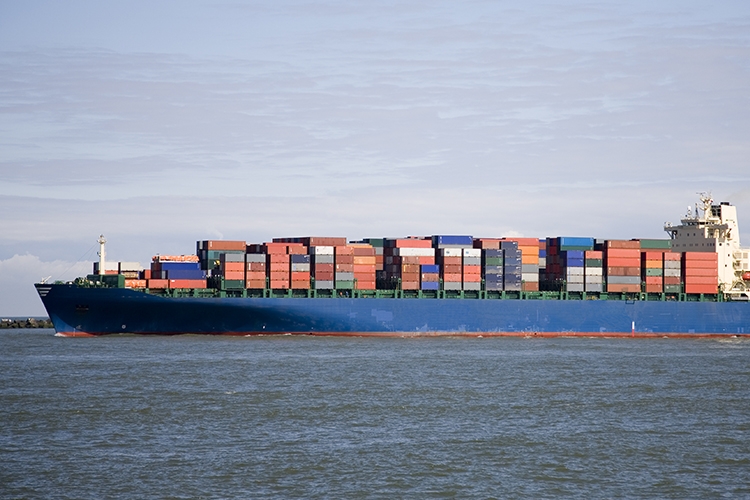

Imagine you purchase 10 timber crates of tools from a supplier halfway around the world. To get to you, the tools embark on a long and complicated journey: traveling on land (via train or truck) from the factory to an international seaport, getting loaded onto a cargo ship, sailing to a port near you, getting loaded off the cargo ship, and finally traveling by land to your location.
At long last, your delivery date is here! Unfortunately, you receive only eight of the 10 crates you ordered. The other two arrive two months later containing rusted tools with waterlogged packaging. This mishap will likely cost you your supply contract with your client. Someone must take financial responsibility for the loss, but who is liable? The answer is a complicated “it depends.” This is where the complex nuances of marine insurance, along with the defined duties of the insured in what’s known as the “institute cargo clause,” come into play.
Protect your precious cargo
In today’s interconnected economy, the global supply chain involves the trade and transport of goods on a massive scale. Numerous handoffs and transfers occur in getting products from point A to point B; in risk management terms, this means multiple opportunities for cargo to be misplaced or become damaged.
Hundreds of shipping containers fall off ships each year, and the risk of cargo being lost at sea increases as ship container capacities grow in the interest of cost efficiency. Additionally, data from the last five years shows that large losses associated with fires or explosions aboard cargo ships occur nearly every two months. These incidents often stem from the improper declaration, storage or handling of hazardous cargo and the increase in shipped goods containing lithium-ion batteries. With containers stacked many tiers high and deep, it can be difficult for crews on board to access the source of a fire and get it under control before other surrounding containers incur significant damage. Additional risks — such as flooding, being dropped and other handling issues — are present for containers while in transit, staged at intermediate facilities or in port.
These are only some of the things that can go wrong during the passage of goods from supplier to receiver. Marine insurance is designed to provide a financial safeguard when unexpected events like these occur. Given how many variables there are — multiple parties handling the cargo, different modes of conveyance, ever-changing conditions and forces of nature, and the numerous ways that goods can incur damage — marine cover offers critical protection for those with a financial interest in the transported cargo.
Read the fine print
Marine cargo policies come in many shapes and sizes. The specific conditions in each policy dictate whether and how it will respond to a loss, depending on how, when and where damage occurs. The extent of cover and any exclusions are outlined in the policy, with most constructed around the fundamental institute cargo clauses. (The most common ones are published by the London Institute of Underwriters, in conjunction with the Lloyd’s Underwriters Association.) These clauses, which are widely accepted around the world, define the risks covered, applicable exclusions, when cargo is considered “in transit” for coverage purposes and the duties of the insured. These serve as the framework of marine cargo insurance.
There are a number of institute clauses, but the three that are most commonly encountered are often referred to as cargo clauses A, B and C. Clause A offers the broadest coverage; therefore, it generally has the highest premiums. Clause B is somewhat more restrictive and is commensurately more moderately priced. Finally, clause C has the most exclusions and covers only limited risks, but it is a far cheaper option.
All of the above clauses are consistent with their transit application. The relationship that stems from the sales contract, which should include the delivery terms (or Incoterms®, as they are commonly known), prescribes whose marine cargo policy will respond and the applicable institute cargo clauses in place, should a claim be intimated against the policy.
Tools of the trade
When we assess marine cargo losses, many factors are considered apart from establishing causation and quantifying the damage. We can assist insureds in limiting their losses, safeguarding their commercial interest, and ensuring the protection of an insurer’s right for recovery.
Complex definitions of the terms governing the sale of goods can affect when coverage starts and ends, when the risk transfers from the buyer to the seller and other important factors. General knowledge of when risk, title and responsibility for freight arrangements transfer from one party to the other is essential — not only in ensuring that the cargo continues an uninterrupted transit from supplier to receiver, but more importantly, whose policy responds in the event of a claim.
Based on my years of experience assessing marine cargo claims, it seems many insured do not fully understand the peculiarities of their marine cover; the role of Incoterms with regard to their responsibility, risk, transfer of title and logistic arrangements; how the institute cargo clauses apply; and how the interplay between all of these elements affects claim outcomes. Those who operate in the marine cargo space are encouraged to thoroughly familiarize themselves with their obligations, as well as what’s included — and not included — in the various institute clauses.